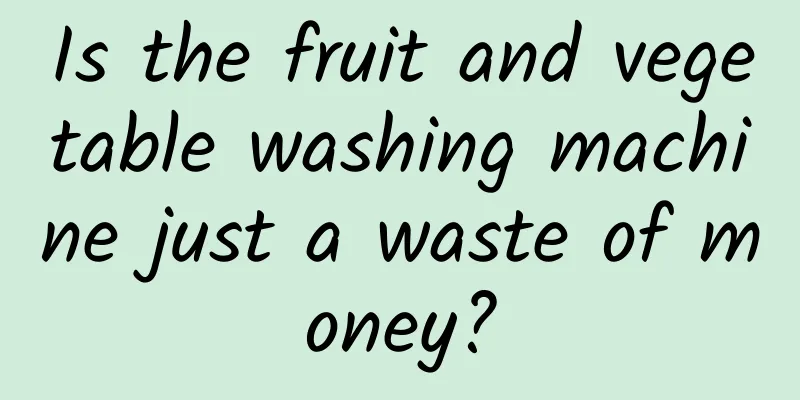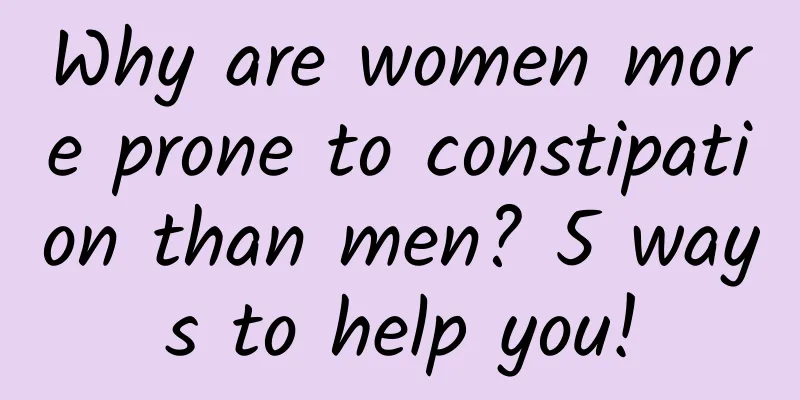Is the fruit and vegetable washing machine just a waste of money?

|
A healthy diet requires "vegetables at every meal and fruits every day", but pesticide residues in fruits and vegetables pose a health hazard - frequent consumption of vegetables with excessive pesticide residues may harm health, such as inducing chronic diseases and even increasing the risk of cancer. In order to eat healthier, many people choose to buy a fruit and vegetable washing machine, hoping that it will allow them to eat safe, pollution-free, clean fruits and vegetables. A fruit and vegetable cleaning machine | Tuchong Creative However, people have mixed opinions about fruit and vegetable washing machines. Some say they are very useful, while others say they are a waste of money. So what is the truth? Let me first state the conclusion: fruit and vegetable washing machines do have some effects, but they are by no means an irreplaceable necessity. Why do we say that? Let's start with the principles of various fruit and vegetable washing machines. 01 What technologies are commonly used in fruit and vegetable cleaning machines? Ozone technology: The first type of fruit and vegetable cleaning machine that appeared on the market was the "ozone type", which can produce ozone. Ozone is a disinfectant with good bactericidal effect. It has strong oxidizing properties and can react with residual organophosphorus or carbamate pesticides in fruits and vegetables. Ozone type machines have a higher effect in removing pesticide residues. Tuchong Creative Studies have shown that ozone has a strong degradation effect on methamidophos, omethoate, dichlorvos, parathion and cypermethrin. Methamidophos has the fastest degradation rate, followed by cypermethrin, omethoate, dichlorvos and parathion. [1] The degradation rate of methamidophos pesticides reached 95%, and the degradation rate of cypermethrin pesticides reached 91.4%. [2] In addition, ozone can penetrate plant cell walls and has a certain permeability effect on the skin of fruits and vegetables, which improves the degradation of pesticides. After ozone treatment, the degradation products of pesticide residues will dissolve in water and can be removed by water washing. Although the effect seems to be good, it also has a big flaw: the ozone emitted into the air during use will irritate the human respiratory mucosa and endanger human health. Degradation effect: leafy vegetables > nightshades and beans. Ultrasonic technology: "Ultrasonic" fruit and vegetable cleaning machines use ultrasonic waves to propagate in liquids to generate positive and negative alternating sound pressures, forming jets that impact fruits and vegetables to achieve the purpose of purifying fruits and vegetables. The degree of cleaning is related to the power and time of the ultrasonic wave, of which the power has the greatest impact. The higher the power, the better the effect of removing pesticide residues, but high power will also be accompanied by strong noise pollution. In addition, the sterilization ability of ultrasonic technology is poor. For example, the ultrasonic cleaning machine we usually use to wash glasses and jewelry has a power of only a few watts to more than ten watts, which is quite noisy, while the power of the cleaning machine that can be used to wash vegetables is often dozens of watts or even higher. Degradation effect: leafy vegetables > nightshade vegetables > root vegetables. [3] The machine used to wash glasses relies on ultrasound | Tuchong Creative Hydroxyl water ion purification technology: "Hydroxy water ion purification type" is the third type of fruit and vegetable cleaning machine, and it is also the most common type on the market. Hydroxyl free radicals are generated in water under electrolysis conditions, and the purification effect is achieved using advanced oxidation technology. Some studies have shown that it can quickly kill bacteria and quickly degrade pesticide residues and hormones. However, there is little research data on the degradation of pesticide residues and hormones by hydroxyl water ion purification technology, which needs further verification. In addition, the main purpose of washing vegetables is not only to remove agricultural residues, but also to remove dirt on the surface of fruits and vegetables. Hydroxyl water ion purification technology is not very effective in cleaning large particles of dirt on the surface of fruits and vegetables. [2] As for sterilization, it can be completely solved by high-temperature cooking. Water hydroxyl and ultrasonic composite technology: Combining the characteristics of "hydroxyl water ion purification type" and "ultrasonic type", there is also a relatively high-end composite fruit and vegetable cleaning machine on the market. It has multiple properties, including sterilization, degradation of pesticide residues, and dirt removal. It is more effective in degrading pesticide residues and hormones, reaching over 90%. [2] However, it is also relatively expensive, costing over 1,000 yuan. After looking at the above technologies, are you still a little excited? Do you think it looks very scientific? Do you want to buy one? Wait a minute. 02 The gap between experiment and reality At present, most of the fruit and vegetable cleaning machines on the market use a single technology, with a large gap in technical level and uneven effects on degrading pesticide residues. Moreover, the effects of different types of pesticide residue reduction in the above studies are mostly for common pesticides, such as methamidophos, omethoate, dichlorvos, cypermethrin, parathion, etc. The types of pesticides used in fruits and vegetables on the market may be more complex and remain attached to them for a longer time. The experiment only simulated pesticide residues in vegetables by soaking them in pesticides for a period of time, which may not necessarily represent the actual situation. Tuchong Creative Moreover, in this type of cleaning experiment, vegetables that have been sprayed with pesticides are generally soaked for 5 to 20 minutes, and soaking itself has the effect of removing pesticide residues. Studies have shown that soaking green vegetables in tap water can remove 46% of methyl parathion and dimethoate. [4] In addition, some people have evaluated the degradation effect of pesticide residues on "hydroxyl water ion purification" fruit and vegetable cleaning machines of different prices on the market: the merchants advertised that the removal rate of the pesticide dimethoate was over 90%, but in the simulation experiment, the removal rate of dimethoate by water washing was 31.8%, and the removal rates of dimethoate by three fruit and vegetable cleaning machines were 50.7%, 39.1%, and 27.5% respectively. The evaluation results showed that none of them achieved an effect of over 90%, and some were even worse than ordinary water washing. [5] 03 A lot of bubbles? But that doesn't mean anything On the promotional pages of many vegetable and fruit washing machines, there is a picture of "meat washing" surrounded by foam. The merchants say that this is because the hormones and clenbuterol in the meat are degraded. ▲Picture: Promotional picture of e-commerce platform But in fact, the foamy substance that appears when washing meat with a fruit and vegetable washing machine has nothing to do with hormones, clenbuterol, etc. Why do you say that? When we blanch the ribs we just bought, a lot of foam will appear. But this is only because there is some residual blood in it. The meat also contains protein and free amino acids, which can become substances similar to surfactants. When combined with gas, foam will appear. When the fruit and vegetable washing machine is working, a large number of small bubbles will be generated, and naturally a lot of foam will appear. Washing meat, there is indeed a lot of foam In addition, some people have done experiments. After washing the meat many times with a fruit and vegetable washing machine and then continuing to wash it, a lot of foam will still appear. So is the meat really clean? Therefore, there is no need to place an impulse order just because you think the fruit and vegetable washing machine has “visible effects”. 04 It is more important to choose and wash vegetables correctly The reason why everyone wants to own a fruit and vegetable washing machine is nothing more than worrying that pesticide residues will harm their health. But in fact, in daily life, most of the vegetables we buy in regular supermarkets have pesticide residues within the prescribed range. An experiment collected 531 vegetable samples from 20 districts and counties in Chengdu from 2017 to 2019 and tested them. The results showed that 92 vegetable samples were found to contain 32 types of pesticide residues, with a pesticide detection rate of 17.33%. Only one sample exceeded the standard, and 9 samples were found to contain the banned pesticides chlorpyrifos and fipronil, with a failure rate of only 1.88%. [6] To be frank, just charge ahead and it's over... | TuChong Creative Moreover, even if you don't need a fruit and vegetable cleaning machine, there are many daily methods that can effectively remove pesticide residues (leafy vegetables should be washed more carefully). The following methods are recommended: Soak in clean water: Before cooking, vegetables can be soaked in clean water for 10 minutes at a temperature of 20℃ to 25℃, and then rinsed with clean water for 30 seconds. Experiments have shown that this method is 90% and 76% effective in removing chlorothalonil and procymidone, and 22% effective in removing cypermethrin, and the effect on leafy vegetables is better than that on fruit vegetables. In addition, soaking in water had a greater impact on cucumbers. After soaking for 5 and 15 minutes, the removal rate increased from 53.49% to 71.32%. This may be because the surface of cucumbers is not smooth and requires longer soaking. [7] Soaking in rice water: Soak vegetables in rice water for 5 to 10 minutes, then rinse with clean water for 30 seconds. Experiments have shown that soaking vegetables in rice water for 5 to 10 minutes can effectively remove the residue of procymidone. For fruits and vegetables, such as cucumbers and eggplants, soaking in rice water for 5 minutes is the best effect; for leafy vegetables, soaking in rice water is recommended, with green vegetables soaking for 5 minutes for the best effect, and amaranth and water spinach soaking for 15 minutes for the best effect. [7] 1% salt water: Soak vegetables in 1% salt water for 20 minutes and then rinse. The pesticide residue removal rate can reach 81.9%. Note that the salt concentration should not be too high. 1% is sufficient to avoid excessive osmotic pressure that damages vegetable cells and causes nutrient loss. [8] Soaking in boiling water: Soaking vegetables in boiling water for 2 minutes and then rinsing them with clean water for 3 times can effectively remove organophosphorus pesticide residues on the surface of vegetables. Data show that this method is effective in removing pesticide residues in leeks, with a removal rate of more than 90%. However, this method will cause some nutrient loss in vegetables. [9] In addition to the above four methods, you can also use running water scrubbing, peeling, leaving it for 24 hours, etc., which are also effective in removing pesticide residues. Summarize: In fact, if we buy in regular supermarkets, we don’t have to worry too much about the pesticide residues in fruits and vegetables. If we are really worried, we can buy organic fruits and vegetables. In addition, simple methods such as traditional water, light salt water soaking, running water washing, hand rubbing, etc. can remove a considerable amount of pesticide residues and bacteria, and cooking itself can have a sterilizing effect, so there is no need to spend so much money to buy a fruit and vegetable washing machine. However, for those who are too lazy to wash the vegetables carefully, want to free their hands and are willing to spend money, buying a fruit and vegetable washing machine is probably not a waste of money. After all, it can remove some pesticide residues and kill some bacteria (note that a frying pan can also do this...). Author | Xue Qingxin, member of Chinese Nutrition Society, registered dietitian, health manager, public nutritionist Reviewer | Han Hongwei, Director of Risk Communication Department, National Food Safety Risk Assessment Center Editor | Ding Zong References: [1] Zhang Ning. Study on the mechanism and effect of ozone degradation of pesticide residues in vegetables[J]. Food and Machinery, 2006, 22(4): 57-59, 66. DOI: 10.3969/j.issn.1003-5788.2006.04.017. [2] Liao Mingyan, Zhu Jixing, Huang Xiaojie, et al. Experimental study on the performance of household fruit and vegetable purification and cleaning machine[J]. Home Appliance Technology, 2021, 5(5): 89-93. DOI: 10.19784/j.cnki.issn1672-0172.2021.05.015. [3] Cheng Can, Zhao Di, He Tianyu, He Jiguo. Study on the removal effect of ultrasonic cleaning on pesticide residues in different vegetables[J]. Chinese Agricultural Science Bulletin, 2017, 33(02): 132-137. [4] Bai Liwei, Pu Quanming, Li Wentao. Research progress on degradation methods of organic pesticide residues in fruits and vegetables[J]. Modern Agricultural Science and Technology, 2012(13):127-129. [5]https://mp.weixin.qq.com/s/SCr_2UveQ9y-s41gm4go_w [6] Yin Quan, Li Yi, Liu Wei, Chen Min, Chen Longfei, Yang Xiaofeng. Analysis of pesticide residue status and causes of vegetables in Chengdu production base[J]. Hubei Agricultural Sciences, 2021, 60(01): 131-134. DOI: 10.14088/j.cnki.issn0439-8114.2021.01.027. [7] Song Jia, Song Lihua, Chen Yue, et al. Effect of washing methods on the removal of pesticide residues from fruits and vegetables[J]. Food Research and Development, 2017, 38(20): 160-164. DOI: 10.3969/j.issn.1005-6521.2017.20.033. [8] Sun Xiangxiang, Zhang Fengxiang, Cao Mengdi, et al. Pesticide residues in vegetables and the effects of different cleaning and storage methods on pesticide residues[J]. Modern Agricultural Science and Technology, 2017, (22): 91-93. DOI: 10.3969/j.issn.1007-5739.2017.22.049. [9] Ji Jing, Yang Xiaoqian, Guo Dongmei, et al. Study on the degradation method of phosphate ester organophosphorus pesticides residual on vegetable surface[J]. Journal of Shandong University (Medical Edition), 2009, 47(7): 122-124,132. Scientific rumor refutation |
>>: Today is Grain Rain丨Late spring is coming to an end and early summer is coming
Recommend
Complete success! A photo review of the interstellar bridge "Queqiao-2"
The National Space Administration announced on Ap...
Do you feel that the channels are deceptive when promoting? See what the students in the channel say
As an operator who has worked in the mainstream i...
After three days of not using it, the mask has turned into a bonsai. Will the seaweed mask sprout when applied on the face?
Everyone knows about seaweed masks, which are the...
Lei Jun handed over the living room to Chen Tong
The dust has settled, and Chen Tong, the former e...
What kind of meat is used in the grilled sausages sold on the street? Can we eat it?
We often see people selling grilled sausages on t...
The national emblem of this country contains a drink that workers must have
The national emblem of the Federative Republic of...
High-quality marketing copywriting: 2 misunderstandings and 3 logics of copywriting!
If you are an expert, please ignore this article....
Dongfanghong Chen Chen's advanced online training course video, unraveling the mystery behind funds
: : : : : : : : : : : : : : : : : : : : : : : : : ...
How to improve the conversion rate of cash loan products?
1. The focus of products at different stages is d...
You are not fat, why do you always say you want to lose weight?
Being keen on using diet to shape the body and be...
Getting Started with WatchKit: Creating a Simple Guessing Game
Editor's note: As you know, Apple has include...
November Android security patch released: also fixes many non-security issues on Pixel devices
As usual, Google releases security updates for An...
How to write an event planning proposal that will satisfy both your boss and your clients?
In today's business environment, it is extrem...
Tik Tok account monetization strategy!
Now that you have fans and traffic, how do you mo...
Weibo Fans Advertising and Charging Standards!
1. Introduction to Fantong What is Fantong? To pu...









